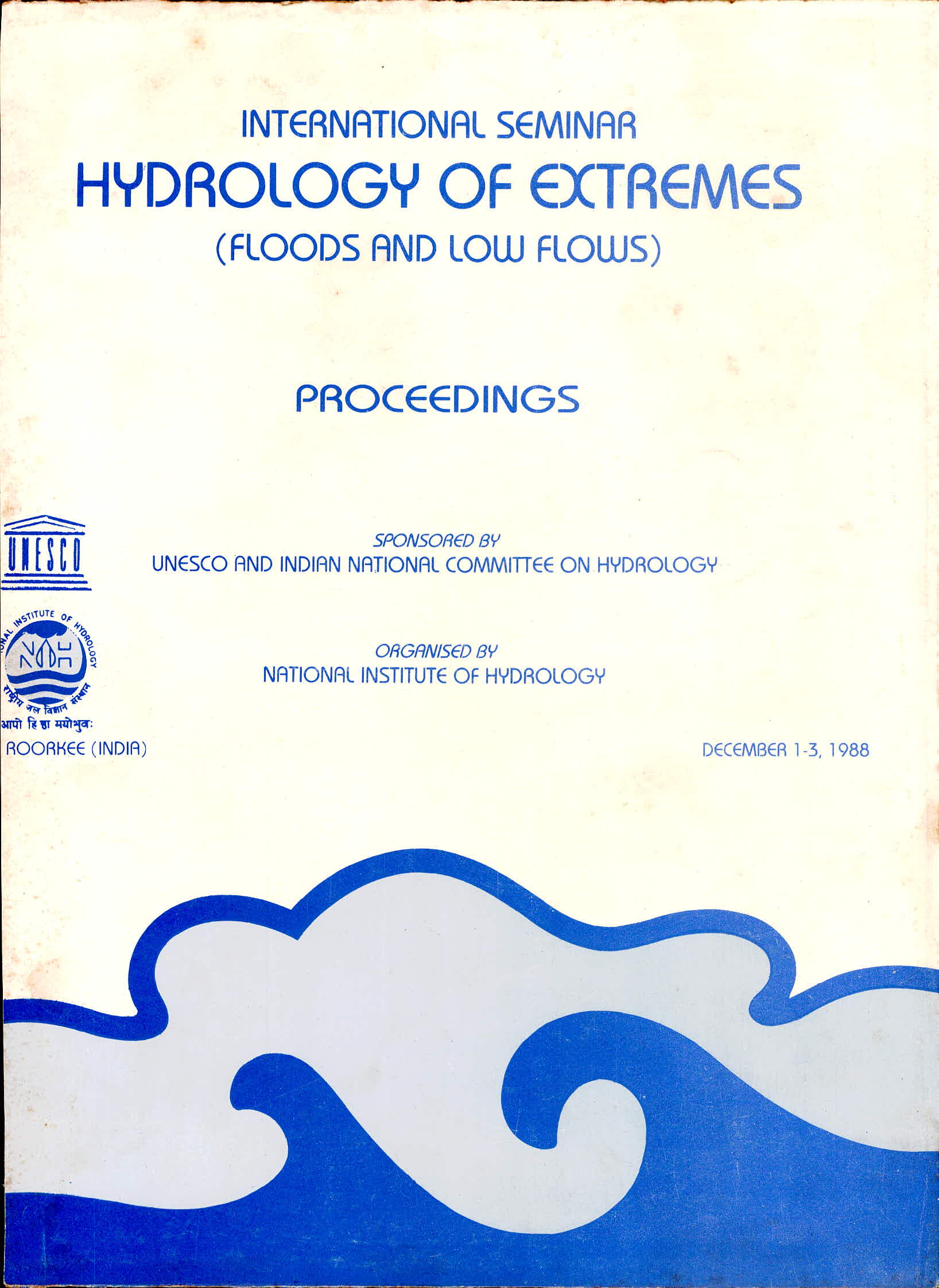DSpace Repository
01-International Seminar on Hydrology of Extremes (Floods & Low Flows) 1-3 December 1988 at Roorkee (India)
- DSpace Home
- →
- Conference Proceedings
- →
- International Conference
- →
- 01-International Seminar on Hydrology of Extremes (Floods & Low Flows) 1-3 December 1988 at Roorkee (India)
JavaScript is disabled for your browser. Some features of this site may not work without it.
01-International Seminar on Hydrology of Extremes (Floods & Low Flows) 1-3 December 1988 at Roorkee (India)
Browse by

Recent Submissions
-
Conents (National Institute of Hydrology, 1988)
-
(National Institute of Hydrology, 1988)
-
(National Institute of Hydrology, 1988)
-
(National Institute of Hydrology, 1988)
-
(National Institute of Hydrology, 1988)In recent years very accurate and complete catalogs of ancient, extraordinary floods have been developed through scientific study of slackwater deposits and palaeostage indicators (SWD-PSI) in ...
-
(National Institute of Hydrology, 1988)The analysis of about fifty years of short duration rainfalls in Northern Italy was performed deriving isohyetal maps of depths with assigned return period and comparing the mass curves of ...
-
(National Institute of Hydrology, 1988)In India floods mainly occur during the monsoon season. They are caused by the heavy rainfall that occur along the track of monsoon depressions The Bay depression• of 25 September 1986 which caused ...
-
(National Institute of Hydrology, 1988)The high outliers in an extreme rainfall series are not be rejected as our interest lies in estimating the probable high intensity for design purposes. Maintaining the outliers ...
-
(National Institute of Hydrology, 1988)The log Pearson type 3 distribution has been recommended in the U.S. and Australia for representing annual flood flow series. The method of moments is one of the popular methods used for fitting this distribution. ...
-
(National Institute of Hydrology, 1988)Design of water resources structures needs estimation of hydrologic and meteorologic events for different return periods. This can be obtained through frequency analysis approach. The ...
-
(National Institute of Hydrology, 1988)Many observed annual flood series exhibit reverse curvatures when plotted on lognormal probability paper. None of the existing frequency distributions fits such a series. The physical rationale for the mixed-distribution ...
-
(National Institute of Hydrology, 1988)The effects of the type-1 censoring on the maximum likelihood estimators based on samples drawn from the Log Pearson Type-3 (LP3) distribution were analyzed in this study. For this purpose, all ...
-
(National Institute of Hydrology, 1988)The paper discusses the various components of hydrologic and hydraulic uncertainties that combinedly constitute the hydraulic risk of a water resources structure; and specifically examines in ...
-
(National Institute of Hydrology, 1988)Annual flood peak series at 93 stations located all over India have been analysed. Out of the various frequency distributions available, it is found that GEV type I fits the data more closely. It is then found ...
-
(National Institute of Hydrology, 1988)An attempt has been,made to study the flood frequency for different regions of Kerala. The peak flow data available for 85 guaging stations in 44 river basins of Kerala have been made use ...
-
(National Institute of Hydrology, 1988)The estimation of floods for small and medium catchments poses a problem due to impractiability of collecting site specific long term data to overcome this Central Water Commission has therefore been ...
-
(National Institute of Hydrology, 1988)The aim of this paper is to establish a relationship between the peak annual floods and the related drainage area in arid zones similar to those in Iran.To achieve the aim the hydrological ...
-
(National Institute of Hydrology, 1988)The work reported herein deals with the formjlation of a mathematical model to estimate the surface runoff hydrograph-for a given net-rainfall hyetograph over small watersheds. With the precipitation ...
-
(National Institute of Hydrology, 1988)A general mathematical modelling system for real-time flood forecasting and flood control planning is described. The system comprises a lumped conceptual rainfall-runoff model, a hydrodynamic ...
-
(National Institute of Hydrology, 1988)The ability of radar-rainfall estimates to improve real-time flood forecasting is currently under research at the University of Waterloo. Visual assessment of the input radar-rainfall field is an important ...